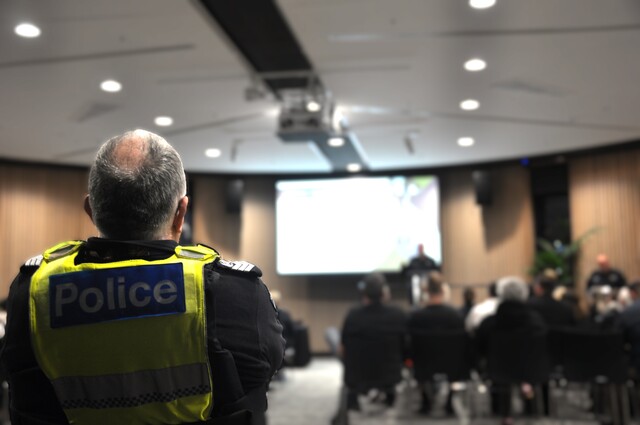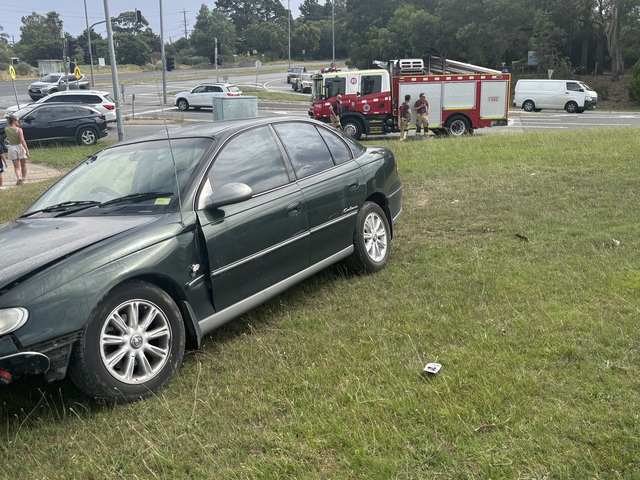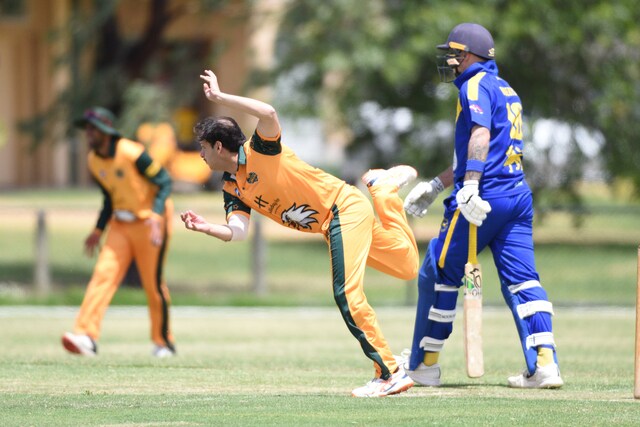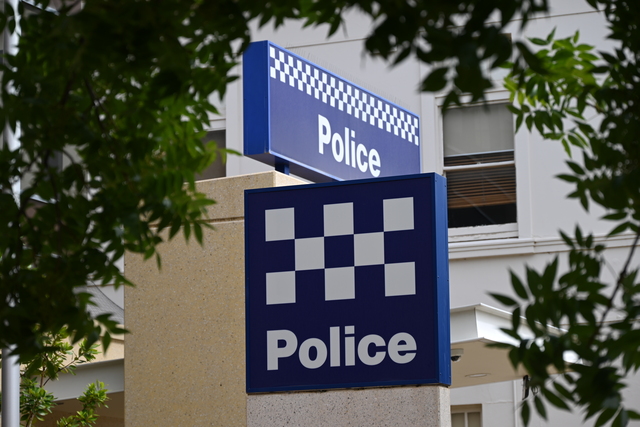Youth crime was a close second among residents’ prime concerns during the Neighbourhood Crime Forum at Bunjil Place, with questions around safety and what police are doing about rising statistics.
Victoria Police officials acknowledged that while official stats show youth crime has trended down across the past five years, residents remain deeply concerned about repeat offending, aggravated burglaries, and car thefts that continue to hit local neighbourhoods.
Christian, the tasking and coordination manager for the local area, said that the graphical line is visibly going down, “but if you’re a person that’s been affected by these crimes, then you won’t care that it’s going down”.
“It’s well-documented that a small cohort of our community is committing a lot of our offences.
“That in turn, for us police, is giving us more work, and in addressing that, we’re trying to make sure that we can alleviate our frontline members so that these people are not going to be offending as often as they are,” he said.
He, alongside other officials throughout the night, stressed that much of the serious offending is done by a persistent cohort of repeat youth offenders, and that the same names are turning up time and time again in crimes such as aggravated burglaries, high-risk driving and theft.
“On a local level, we rely on the local police, we rely on our local community to feed in that information,” he said.
“Traditionally, police would just arrest, but we can’t arrest our way out of this situation, so we’ve got to look more broadly, and this is how the community can help us.
“This is a community problem, so how do we engage the community to help us on that pathway?”
While intervention was important, Christian highlighted that prevention was also integral, adding that police will put these offenders “in front of the courts”, but the question of “how do we stop them from recommitting” remains.
“It’s a broader issue than just justice, it could be health issues, could be welfare issues, and it’s what our teams are looking into,” he said.
“How can we assist and support those offenders, their families and the community to find a solution so they don’t end up in the same cycle?”
Officers highlighted programs already in place to try to steer young people away from re-offending.
An example provided by the acting senior sergeant for the Proactive Policing Unit, Kylie White, is the current Blue Edge Program that partners with schools each term.
This involves partnering police with these schools through sports, breakfast, and open conversations designed to break down barriers.
“It’s breaking down barriers and giving opportunity for kids to discuss different issues that are important to them,” White said.
Another example that was provided was the Embedded Youth Outreach Program, which runs on a daily basis from 3pm to 11pm, providing a “hot response” for young people caught offending, as well as working alongside youth advocates to assess needs and connect them with services.
“This is a joint, after-hours service aimed at reducing youth offending by engaging with a young person in real time, assessing their needs, and referring them to youth support services,” White said.
White added that work with culturally sensitive community groups is also important, noting that different cultures have had “bad experiences with police”, with officers keeping in contact for up to three months in terms of support.
“We want to minimise victimisation, as well as offending, and minimise harm; we have a wonderful community here and it takes a whole community effort to make change,” she said.
On the conversation of intervention and prevention, the gallery’s concerns on scope remained, with questions around the limited number of patrol cars in Casey at night, as well as the lack of mobile CCTV trailers in known hotspots being raised.
Police, in response, said that broader visibility was being supported by Operation Trinity’s additional resources, while negotiations with the council over CCTV funding were ongoing.
Star News, which attended the event, asked whether police were confident that operations such as Trinity and Alliance were dismantling the cycle of repeat offenders, and if prevention played a role in the process.
Officers said that while it is “very hard to break the cycle”, the process is ongoing.
“We know who these kids are, the vast majority of them, and we work with them; we have tried a two-pronged approach.
“It’s quite technical how we’re scoring them, but once we’re provided with a list of offenders, we reach out to their families, and we work collaboratively with the justice system.
“Again, we can’t arrest our way out of this problem; no one ever asks what happens after they go to court.
“They go to Parkville, they’re in custody, what happens next? During that period, we’re doing work with their family, youth justice, child protection and their schools,” they said.
In light of this, bail laws also drew a heated discussion, where audiences asked why repeat offenders continued to be released back into the community.
Police then noted that bail is determined by magistrates, but also pointed to recent changes to Victoria’s Bail Act that prioritise community safety and tighten conditions for serious or repeat offenders.
Ultimately, police, as well as councillors and other present community leaders, agreed that tackling youth crime will require a comprehensive, whole-of-community approach, from reporting suspicious activity and securing property, to supporting young people and their families before the problem escalates.







